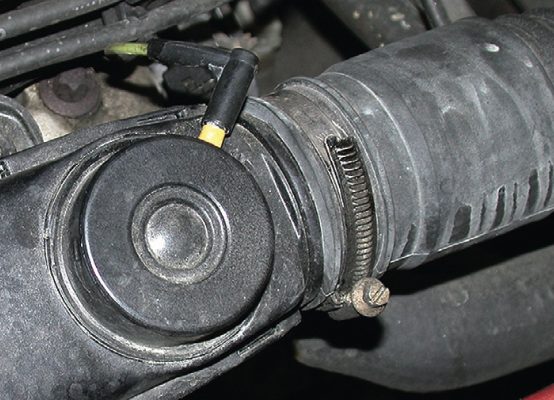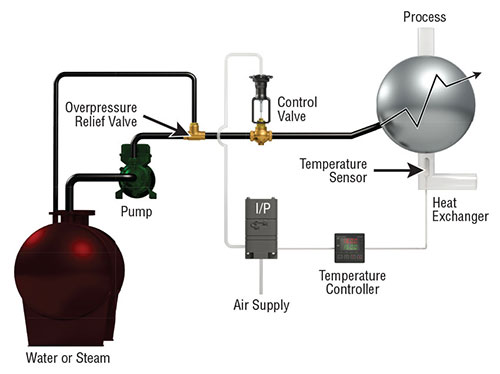Air temperature control valves are an essential component of any heating, ventilation, and air conditioning (HVAC) system. They are responsible for controlling the flow of hot or cold air into a space to maintain a comfortable temperature for the occupants. In this blog, we’ll dive into the details of air temperature control valves, including how they work, the different types available, and their benefits.
How do Air Temperature Control Valves Work?
Air temperature control valves are essentially devices that regulate the amount of hot or cold air that enters a space. They work by using a temperature sensor to measure the temperature of the air coming in and out of the HVAC system. The temperature sensor sends a signal to the valve, which then adjusts the flow of hot or cold air to maintain a consistent temperature.
Types of Air Temperature Control Valves
- Two-Way Valves: Two-way valves are the most common type of air temperature control valve. They have two ports, an inlet and an outlet, and are used to control the flow of hot or cold water in a hydronic heating system.
- Three-Way Valves: Three-way valves have three ports and are used in HVAC systems to mix hot and cold air to achieve a desired temperature. They are also commonly used in hydronic heating systems to regulate the temperature of water.
- Four-Way Valves: Four-way valves are used in more complex HVAC systems to control the flow of hot and cold air to different zones or rooms. They have four ports and can be used to direct air to specific areas of a building.
Benefits of Air Temperature Control Valves
- Energy Efficiency: Air temperature control valves help to reduce energy consumption by only allowing the necessary amount of hot or cold air to enter a space. This reduces the workload on the HVAC system and ultimately leads to lower energy bills.
- Comfort: By maintaining a consistent temperature in a space, air temperature control valves help to ensure the comfort of occupants. This is particularly important in commercial and industrial settings, where temperature control can have a significant impact on productivity.
- Customization: Air temperature control valves can be customized to meet the specific needs of a building. For example, they can be programmed to adjust the temperature at different times of the day or in different zones of a building.

Conclusion
Air temperature control valves play a crucial role in maintaining a comfortable and energy-efficient indoor environment. They are available in different types, each suited for different HVAC systems. By regulating the flow of hot or cold air, these valves help to ensure that occupants remain comfortable while reducing energy consumption and ultimately leading to lower energy bills. If you’re interested in improving the efficiency of your HVAC system, consider installing air temperature control valves in your building.
Air temperature control valves are a vital part of HVAC systems, which are responsible for heating, ventilation, and air conditioning in buildings. These systems work by circulating air or water through a network of ducts, pipes, and fans to maintain a comfortable indoor environment.
In HVAC systems, air temperature control valves are used to regulate the flow of hot or cold air to different areas of a building. This is important because different spaces may have different heating or cooling requirements depending on their size, orientation, and usage.
For example, a large open space like a conference room may need more air conditioning to maintain a comfortable temperature than a small private office with a single occupant. Similarly, a building located in a colder climate may need more heating than one located in a warmer climate.
Air temperature control valves work by using a temperature sensor to measure the temperature of the air coming in and out of the HVAC system. Based on this information, the valve adjusts the flow of hot or cold air to maintain a consistent temperature in the space.
There are different types of air temperature control valves available, including two-way, three-way, and four-way valves. Two-way valves are the simplest and most common type, used in hydronic heating systems to control the flow of hot or cold water. Three-way valves are used to mix hot and cold air to achieve a desired temperature, while four-way valves are used in more complex HVAC systems to direct air to specific zones or rooms.
Air temperature control valves offer several benefits, including improved energy efficiency, comfort, and customization. By regulating the flow of hot or cold air, these valves help to reduce energy consumption, leading to lower energy bills. They also help to maintain a consistent temperature in a space, ensuring the comfort of occupants. Finally, air temperature control valves can be customized to meet the specific needs of a building, such as adjusting the temperature at different times of the day or in different zones.
In conclusion, air temperature control valves are an essential component of HVAC systems. They help to maintain a comfortable indoor environment while reducing energy consumption and improving efficiency. If you’re considering installing an HVAC system in your building, be sure to include air temperature control valves in your plans to maximize the benefits of your system.
Advantages:
- Energy Efficiency: One of the most significant advantages of air temperature control valves is that they help to reduce energy consumption by regulating the flow of hot or cold air. This can lead to lower energy bills and a smaller carbon footprint.
- Comfort: Air temperature control valves help to maintain a consistent temperature in a space, ensuring the comfort of occupants. This is particularly important in commercial and industrial settings where temperature control can have a significant impact on productivity.
- Customization: Air temperature control valves can be customized to meet the specific needs of a building, such as adjusting the temperature at different times of the day or in different zones.
- Easy Installation: Air temperature control valves are easy to install, making them a popular choice for HVAC professionals.
Disadvantages:
- Cost: Air temperature control valves can be expensive to install, particularly if they are part of a larger HVAC system. This can be a barrier for smaller buildings or those with limited budgets.
- Maintenance: Like all HVAC components, air temperature control valves require regular maintenance to ensure they are working properly. This can add to the overall cost of the system over time.
- Complexity: Some types of air temperature control valves, such as four-way valves, can be complex to install and maintain. This requires specialized knowledge and expertise, which can be a challenge for some building owners or operators.
- Compatibility: Air temperature control valves must be compatible with the HVAC system they are installed in. This can be a challenge if the system is older or uses outdated technology.
In conclusion, air temperature control valves offer several advantages, including energy efficiency, comfort, and customization. However, they also have some disadvantages, such as cost, maintenance, complexity, and compatibility issues. Overall, the benefits of air temperature control valves outweigh the drawbacks for most buildings, making them a popular choice for HVAC systems.









